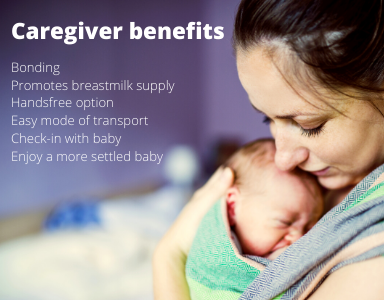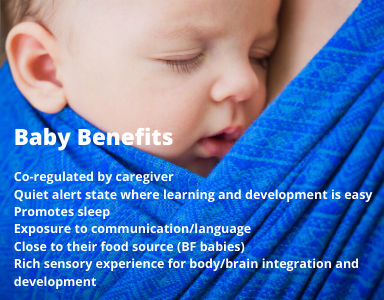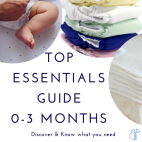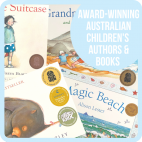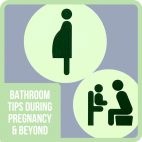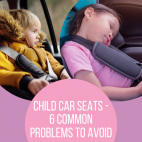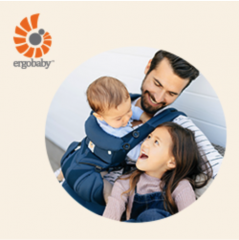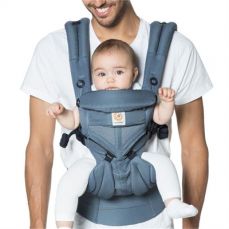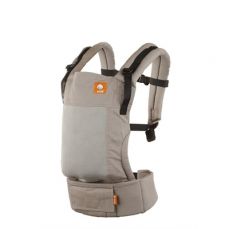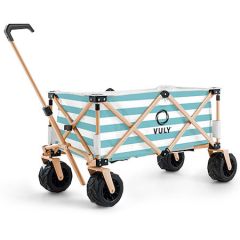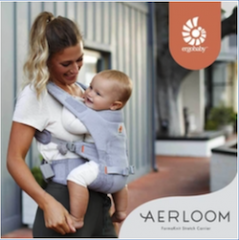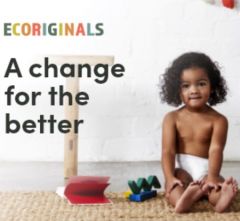Discover Baby Carriers Transport Suitable for stages: 0 - 3 Months, 3 - 6 Months, 6 - 12 Months, 12 - 18 Months, 18 - 24 Months
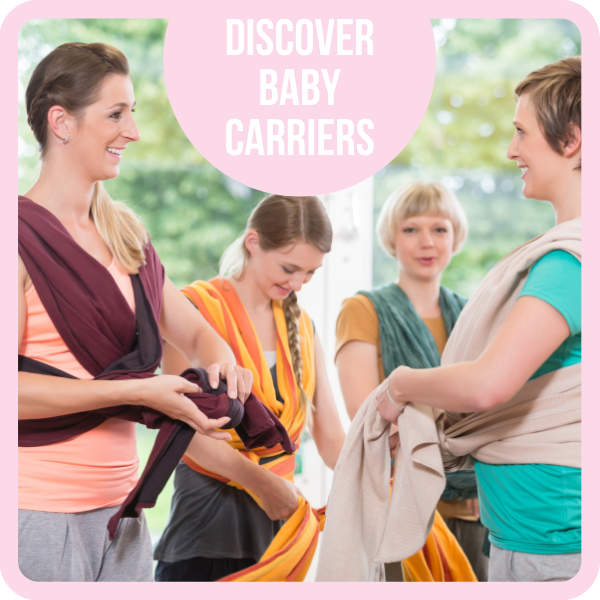

All babies are carried in their mother's body for nine months before entering the outside world.
In the womb, it was warm, supportive, with the comforting sounds of their mother's heartbeat and voice. After their birth, new babies, seek out what they know, the warmth and comfort of their mother’s body.
For a baby, being carried is a calming, sensory, and bonding experience, for the mother, keeping her baby close to her chest makes it easy to check, feed, and protect her baby.
Carrying in arms is great, but not practical all the time. Arms get tired and hands are useful to have free for other tasks. Prams/strollers are an alternative to carriers and are great for some situations, but are not always suitable, available, or convenient.
Having one or more carrier options has so many benefits for mother and baby through the early years. There is a huge range of brands and types of carriers on the market. Any carrier will come with a learning curve but it's worth investing some time in learning babywearing skills as it can become a valuable parenting tool.
Knowing what will suit you and your baby can be difficult to figure out. It can pay off doing some research before you buy, making your life so much easier and baby so much happier.
The basic criteria for the perfect carrier:
- must be comfortable and supportive for anyone needing to wear it
- be easy to check how your baby is going.
- be comfortable and supportive for baby
This is an introductory guide to babywearing including both the general benefits and what to consider before you buy. If you are interested in what options are out there (for all budgets), see the Baby Carrier Buying Guide.
By the end, you should have a good idea of what might suit yours and your baby’s needs and be ready to start looking.
Why babywear?
There is a long human history of using fabrics to wrap and carry babies. It is popular in many cultures and has been the social and cultural norm for many generations. There are a lot of very good reasons for modern mothers to continue the babywearing tradition. There are benefits for the caregiver/parent/mothers as well as for the newborn baby right up to toddler age.
Caregiver benefits:
There are loads of benefits for the caregiver which also translate to benefits for the baby. The following benefits are from the caregiver’s or the mother’s point of view:
1. Bonding
The bonding benefits of babywearing extend to all caregivers (not only mothers). It can be a way for fathers or other caregivers to establish and maintain a close bond with your baby.
Babywearing promotes bonding through close contact, soft touch, connection, and shared experiences. Soft touch has the effect of reducing cortisol release which lowers stress and anxiety. At the same time, it releases oxytocin (the 'love' hormone), promoting better mood and feelings of love. Due to these effects, babywearing is an easy, low-cost activity that can help families manage postnatal life.
2. Promotes breastmilk supply
Keeping baby to mother's chest promotes breastfeeding in a couple of ways. Lots of touch, communication, and calm interaction promotes all the hormones needed for milk flow.
The baby has ready access to the breast and mothers can respond quickly to hunger cues. It's easy to have the supply and demand relationship required for successful breastmilk supply.
It is possible to feed your baby in a carrier while on the move. The fabric of the carrier can cover up baby and mum when in public. This is a great option to keep up with breastfeeds regardless of where you are. It's easy and convenient once you figure out a comfortable position for both of you.
3. Handsfree
A good carrier will have enough support for baby so you can have your hands back for other tasks. Being able to soothe your baby while getting things done is a game-changer for parents.
This becomes very important after having a second baby. Handsfree carrying means you can meet the needs of other children whilst also attending to your new baby’s needs.
4. Easy mode of transport
The carrier creates a close, safe, and secure environment for your baby when in crowds or new places. Parents can easily carry their babies on public transport, up and downstairs and over all terrains. In places where the pram or stroller would have difficulty, you can use a carrier.
5. Check-in with baby
Having the ability to connect and bond with your baby is also known as attunement. Babywearing parents can check in with their baby using all their senses, particularly touch, smell, sight. At any time, they are aware of their baby’s emotional state, hunger cues, comfort levels, breathing, and temperature (to name a few). This ability helps new parents to get to know their baby's cues and develop confidence with parenting.
6. Enjoy a more settled baby
Within the carrier, babies tend to be more settled, calm, and cry less.
Putting an unsettled baby in a carrier can be a settling tool and can often induce sleep in a tired baby. Carrying baby during the day for their naps can be a win-win when your baby refuses to be anywhere else.
Baby Benefits:
1. Co-regulated by a caregiver
Co-regulation is where two people’s temperature, heartbeats & breathing can become synchronised. The emotional, mental and physical state of the close caregiver seems to influence the baby's state. This can also work the other way when their baby is unsettled, the parent feels the same way. In the case of a caregiver with a baby, the caregiver is usually influencing the baby’s body and state. When baby is close, the touch of the caregiver warms the baby. Baby's breathing and heartbeat can follow the rhythm and timing of the caregiver. If the caregiver is calm, the baby will also calm through co-regulation.
2. Quiet alert state where learning and development is easy
When being carried, babies spend more time in a quiet alert state which is ideal for learning. When a baby’s needs are otherwise met, they can be open to seeing, hearing, feeling the world around them. This state is great for learning and brain development. When being carried, the baby is being touched, experiencing different body positions and movements, seeing the world from a new angle. This all contributes to connections between the brain and the body to be developed.
3. Promotes sleep
When not in a quiet alert state, the rhythm/movement of the caregiver, as well as the feeling of being in the carrier, can easily induce sleep. Babies spend most of their sleep time in a state of light sleep known as REM sleep. REM sleep is known to be when the baby’s brain develops and is important for the rapid growth that baby is experiencing. Being in the carrier is the perfect place to get some REM sleep when out and about or even at home. For babies who experience reflux or colic, the upright carried position seems to help lessen their symptoms. For these babies, time in the carrier can be an invitation for some restful sleep.
4. Exposure to communication/language
Babies hear adult speech easily when being carried. This exposes them to the early foundations for language development. Caregivers can be speaking in general conversation with others, speaking to the baby directly or just providing commentary on what is going on in the world around. All this exposure to language is important for your baby to develop their pre-language communication skills. When caregivers can talk to their baby and name what is going on for the baby, this helps to develop their language around feelings and emotions, and learn about the world around them in context. These experiences help to develop emotional intelligence traits. When this is experienced from a place of attachment and security, this is all the more powerful.
5. Close to their food source (for breastfed babies)
Babies who are breastfed feel comforted by being chest to chest and close to the breast. Young babies feed frequently and also for comfort. There are ways for the carrier to be loosened so that baby can feed and be comforted at the same time in the carrier.
6. Rich sensory experience stimulating body/brain integration and development
Being in the carrier can expose babies to a range of important sensations which helps their body and brain to become more integrated and organised. This is known broadly as sensory integration. Without a rich sensory diet throughout early development, children can later struggle academically and functionally. Body awareness (connection and perception of your body) forms the foundation of many skills such as motor/movement & balance. Within a carrier, babies can experience stimulation to many of the senses. They benefit from being upright to see the world from a new perspective. Their sense of balance is stimulated from being moved into different angles by the caregiver- their body learns to integrate the information from the inner ear, visual information, and proprioceptive muscle feedback.
For more information on the benefits of babywearing, check out the book The Vital Touch: How Intimate Contact With Your Baby Leads To Happier, Healthier Development (Book title links to her website) by Sharon Heller, Ph.D. It's an older book but still comes highly recommended on review websites. It is available at Amazon Au.
What a good carrier should do
Comfort and fit for the wearer:
The type of carrier which suits you and other caregivers for your baby will need to be comfortable and ergonomically compatible with its users. If it is not comfortable, it won’t be used at all or it will cause pain and discomfort for the user every time it is used.
Be comfortable for the wearer. It should not put an uneven load on the body or body parts such as pulling on the neck or one shoulder as this can lead to pain and asymmetric posture. If you think about how comfortable you are wearing a backpack versus wearing a sash bag where one strap goes across your body, you can get an idea of whether it will be important for you to have a carrier that spreads the load evenly across your body. Ring slings are worn over one shoulder, which can be comfortable for some people, but others don't tolerate these as well as other types of carriers.
A good carrier doesn't make your baby feel heavier than they are. When carrying a load, any weight close to the body will feel easier and lighter to carry than weight placed off or away from your body. As the weight moves away from the body, it feels heavier and harder to support. The most comfortable carriers distribute the weight of the baby as close as possible to your body and evenly weighted across both hips and shoulder blades, with wide straps that spread the load across a larger area rather than tight on narrow pressure points.
If the carrier will be used by people of different sizes, the size, fit and adjustment capabilities of the carrier needs to be factored into the decision. It there are straps that can be tightened/loosened, are they easy to use to adjust the use between you and your partner or another regular caregiver? Does it just need to fit you? Different carrier types have different methods for adjustment and fit, a carrier that doesn't fit right is unlikely to get much use.
Comfort and fit for the baby
Similarly, the carrier should fit the size of your baby and make them feel comfortable and supported. The position of your baby is important, especially when they are very young.
Look for carriers that maintain the 'C' shape curve of their spine/back and the legs spread apart in an 'M' position (knees slightly higher than the hips). Inward facing front carriers generally encourage the best position for small babies, as long as the baby is positioned high in the carrier (heart to heart) so that their head is 'kissable' and face uncovered.
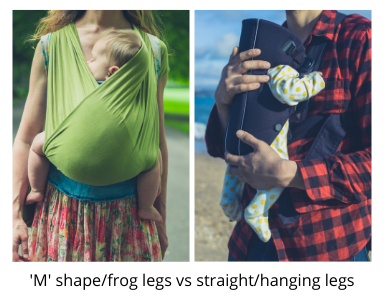
According to TICKS guidelines for safe babywearing, 'young babies do well, against mum’s heart facing her and well supported with access to fresh air. To monitor your baby’s comfort levels, you should be able to see their face, kiss their forehead, see and feel their feet and hands to check their circulation and temperature'. Rednose.org.au also offers advice on how to safely baby carry in a sling.
Babies can easily overheat, especially when against your body and surrounded by thick layers. Look for overheating signs such as red cheeks, sweating, irritability, & heat rash when babywearing. Carriers which are made of breathable fabrics to allow airflow will be the best during the warmer months. When choosing your carrier colour, you could also consider that a darker colour carrier will absorb heat, where lighter colours reflect heat better.
How you dress your baby when going in a carrier can also make a difference. If you dress them lightly, you can always add a layer over the top such as a blanket or wrap or babywearing jacket. Also, make sure clothes aren't bunched up or putting pressure on any body parts or skin surfaces. Onesies or jumpsuits are a great option, however, these need to be an open toe design so you can see your baby's feet and prevent pressure on the toes.
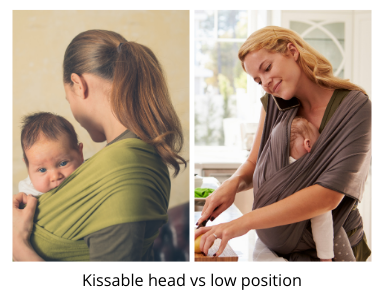
Outward-facing carry positions can be used for older babies when they want to see the sights to learn about the world from their carer's perspective. An outward-facing carrier still needs to support around the hips, ideally with knees higher than their hips (and should never hang by the crotch). The carer may need to provide additional support under the thighs for outward carrying if the carrier does not provide this support.
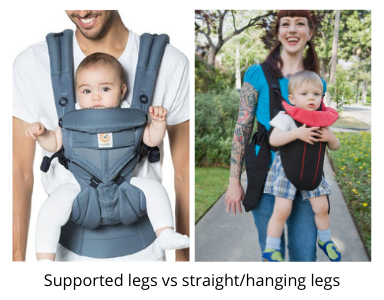
Alternatively, if your baby has good upper body strength, a high back carry can allow them to see the world over your shoulder, but this requires some practice and assistance to get them in and out safely.
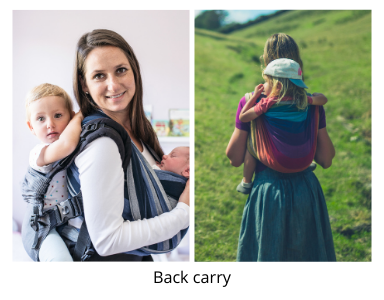
Be able to be mastered
A carrier that you don't have time or inclination to learn how to use is going to be next to useless to you and difficult to get the comfort and fit right. All carriers will have a learning curve, but some are larger than others. For example, a structured carrier may just need some initial adjustment the first time you use it, and then it can be easily taken on and off without needing to play with the adjustments too much. On the other hand, a woven wrap may have a lot more versatility in terms of ways to wear it and fit multiple wearers, however, they take longer to put on (especially at first) and can be adjusted in multiple ways.
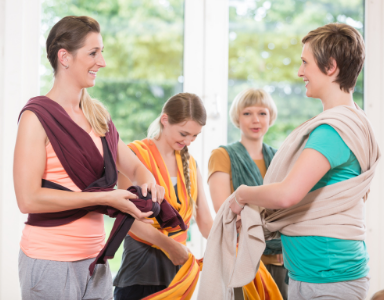
If ease of use is more important than versatility, you may go for a structured carrier. If you want the versatility to carry your baby at any age and multiple position options, which you will master over time, it may be worth taking the extra time to master a wrap. Of course, there are many different types of carriers in between to consider. People who discover a love for babywearing can own multiple carriers for use for different activities and age stages- if you are just getting started, the first carrier you own above all should be something you can use and be comfortable using, if your baby loves being carried and you love it too, you can expand your collection.
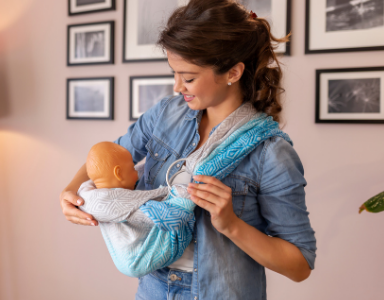
For more information, there are many online resources OR search on Facebook to find your local babywearing group.
Babywearing.co.uk – babywearing leaflet; Choosing a sling or a baby carrier; Buying your first baby sling; Advice for using a sling; Babywearing articles and research
Check out our buying guide next to decide on what carrier will be right for you.
Happy shopping!
Please note: Above all, any information on this website aims to provide general ideas for informational and educational purposes only. We encourage users to investigate several information sources, including, where necessary, independent individualised medical advice before making any decisions that could affect you or your child’s health or wellbeing.
* BabyPeg participates in various affiliate programs and may earn a commission for referring our users through the links provided. This is at no additional cost to our users. We take great care in choosing products and services which align with the mission of promoting better health and wellness for our BabyPeg community. Where possible, products are tried and tested by us. To continue to provide BabyPeg as a free service and reach as many parents as possible, we appreciate your support in using the link provided to purchase if you decide the product is right for you.
